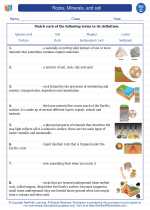Rocks
Rocks are solid, naturally occurring substances made up of one or more minerals. There are three main types of rocks: igneous, sedimentary, and metamorphic.
Igneous Rocks
Igneous rocks are formed from the cooling and solidification of molten rock, either below the surface as intrusive rocks or on the surface as extrusive rocks. Examples of igneous rocks include granite, basalt, and obsidian.
Sedimentary Rocks
Sedimentary rocks are formed from the accumulation and compression of sediments, such as sand, mud, and organic materials. Over time, these sediments are compacted and cemented together to form rocks. Examples of sedimentary rocks include limestone, sandstone, and shale.
Metamorphic Rocks
Metamorphic rocks are formed from the alteration of existing rocks through heat, pressure, and chemical processes. This can occur deep within the Earth's crust. Examples of metamorphic rocks include marble, slate, and schist.
Minerals
Minerals are naturally occurring, inorganic substances with a specific chemical composition and atomic structure. They are the building blocks of rocks and can be identified by their physical properties, such as color, luster, hardness, and cleavage.
Soil
Soil is a complex mixture of mineral particles, organic matter, water, and air. It forms through the weathering and breakdown of rocks and minerals over time. Soil provides a medium for plant growth and is essential for supporting ecosystems.
Study Guide
.◂Science Worksheets and Study Guides Third Grade. Rocks, Minerals, and soil
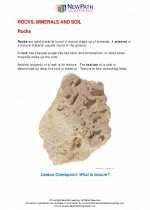
 Activity Lesson
Activity Lesson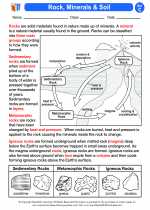
 Worksheet/Answer key
Worksheet/Answer key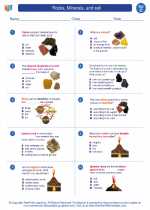
 Worksheet/Answer key
Worksheet/Answer key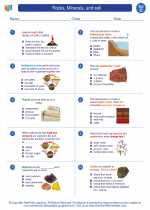
 Worksheet/Answer key
Worksheet/Answer key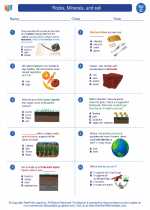
 Worksheet/Answer key
Worksheet/Answer key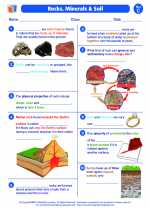
 Vocabulary/Answer key
Vocabulary/Answer key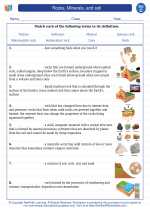
 Vocabulary/Answer key
Vocabulary/Answer key